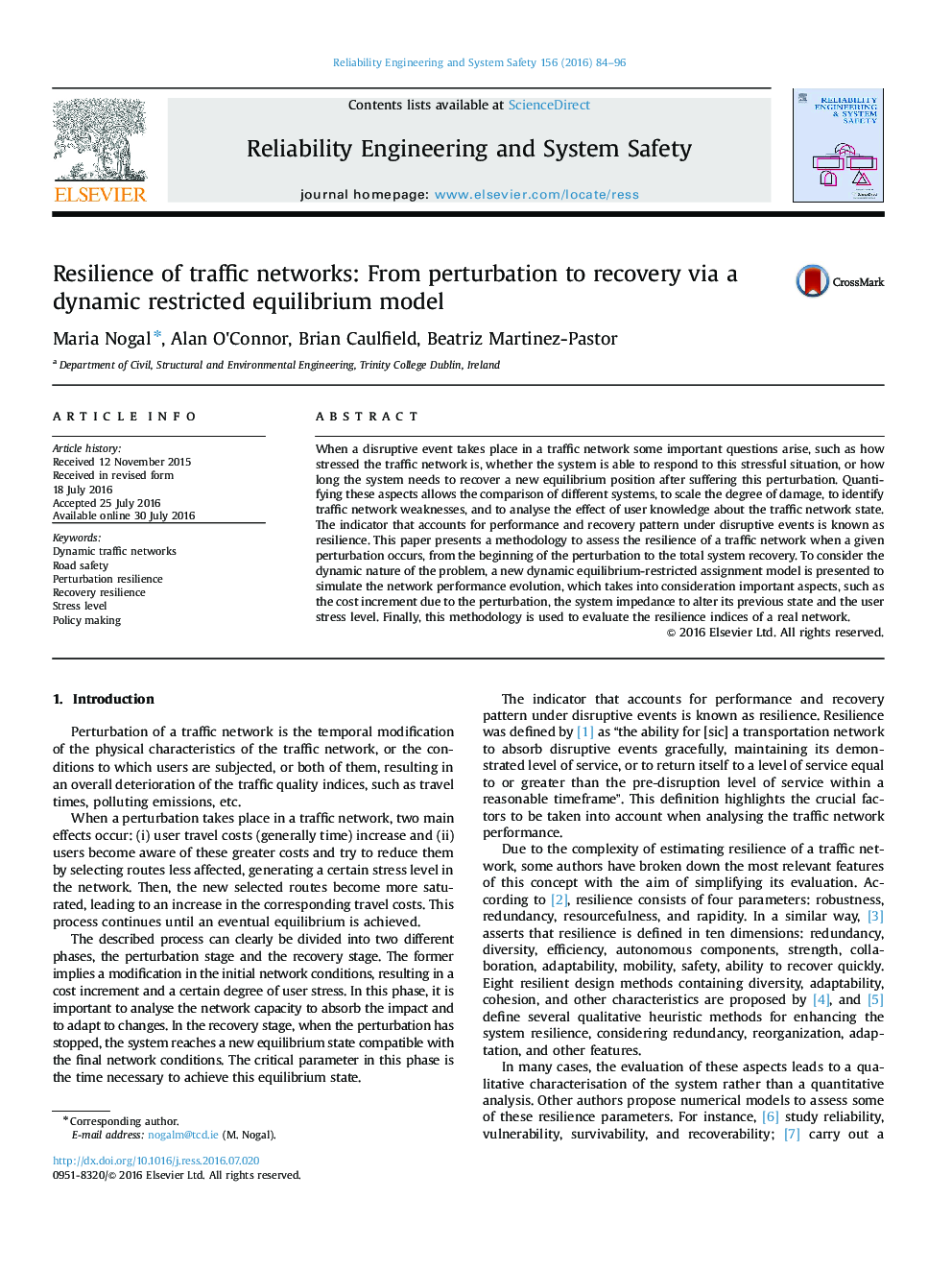| Article ID | Journal | Published Year | Pages | File Type |
|---|---|---|---|---|
| 805269 | Reliability Engineering & System Safety | 2016 | 13 Pages |
•Method to assess the resilience of a traffic network suffering progressive impacts.•It simulates the dynamic response during the perturbation and system recovery.•The resilience index is based on the travel costs and the stress level of users.•It considers the capacity of adaptation of the system to the new situations.•The model evaluates redundancy, adaptability, ability to recover, etc.
When a disruptive event takes place in a traffic network some important questions arise, such as how stressed the traffic network is, whether the system is able to respond to this stressful situation, or how long the system needs to recover a new equilibrium position after suffering this perturbation. Quantifying these aspects allows the comparison of different systems, to scale the degree of damage, to identify traffic network weaknesses, and to analyse the effect of user knowledge about the traffic network state. The indicator that accounts for performance and recovery pattern under disruptive events is known as resilience. This paper presents a methodology to assess the resilience of a traffic network when a given perturbation occurs, from the beginning of the perturbation to the total system recovery. To consider the dynamic nature of the problem, a new dynamic equilibrium-restricted assignment model is presented to simulate the network performance evolution, which takes into consideration important aspects, such as the cost increment due to the perturbation, the system impedance to alter its previous state and the user stress level. Finally, this methodology is used to evaluate the resilience indices of a real network.
